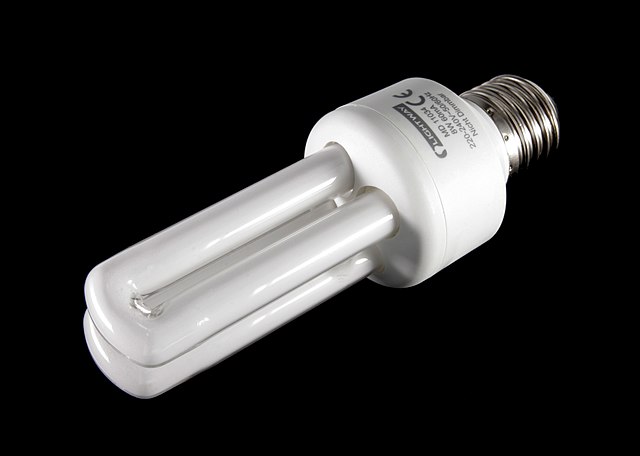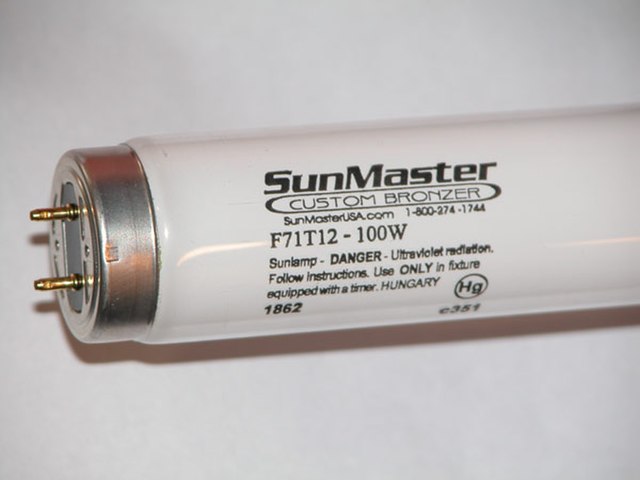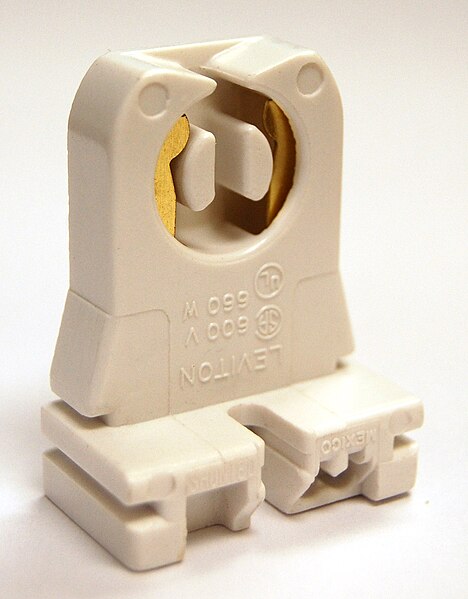A compact fluorescent lamp (CFL), also called compact fluorescent light, energy-saving light and compact fluorescent tube, is a fluorescent lamp designed to replace an incandescent light bulb; some types fit into light fixtures designed for incandescent bulbs. The lamps use a tube that is curved or folded to fit into the space of an incandescent bulb, and a compact electronic ballast in the base of the lamp.
The tubular-form CFL is one of the most popular types in Europe.
Comparison of CFLs with power ratings of 105 W, 36 W, and 11 W
Philips SL*18, an early CFL
A helical integrated CFL, one of the most popular designs in North America since 1995, when a Chinese firm marketed the first successful design
A fluorescent lamp, or fluorescent tube, is a low-pressure mercury-vapor gas-discharge lamp that uses fluorescence to produce visible light. An electric current in the gas excites mercury vapor, which produces short-wave ultraviolet light that then causes a phosphor coating on the inside of the lamp to glow. A fluorescent lamp converts electrical energy into useful light much more efficiently than an incandescent lamp. The typical luminous efficacy of fluorescent lighting systems is 50–100 lumens per watt, several times the efficacy of incandescent bulbs with comparable light output. For comparison, the luminous efficiency of an incandescent bulb may only be 16 lumens per watt.
Linear fluorescent lamps illuminating a pedestrian tunnel
Top: two non-integrated compact fluorescent lamps. Bottom: two fluorescent tube lamps. Both types require a ballast in the light fixture. A matchstick, left, is shown for scale.
Typical F71T12 100 W G13 bi-pin lamp used in tanning beds. The (Hg) symbol indicates that this lamp contains mercury. In the US, this symbol is now required on all mercury-containing fluorescent lamps.
A "tombstone" style lamp-holder for T12 and T8 G13 bi-pin fluorescent lamps








